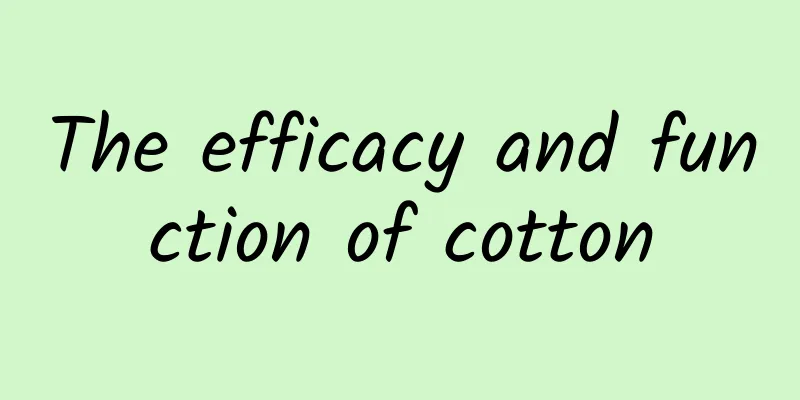The efficacy and function of kidney fruit lentil

|
Kidney bean is a kind of traditional Chinese medicinal material with very wide effects. We can use kidney bean in many places. Kidney bean also plays a very important role in the treatment and relief of many diseases. Now let us learn about kidney bean. [Alias] Yellow flower fragrance. [Source] Medicinal material source: the whole herb with roots of the plant Lentil nephriferum of the Polygalaceae family. [Original morphology] Kidney bean is an annual upright herb, 5-15cm high. The stem is green, cylindrical, with longitudinal ridges and narrow wings; the branches grow from the base and branch in a forked shape. Petiole 0.5-1cm long; leaves papery, ovate, elliptical to ovate-lanceolate, 2-4cm long, 1-2.5cm wide, apex acuminate, base cuneate, decurrent, green above, sparsely covered with white short stiff hairs, light green below, glabrous; main vein raised on both sides, lateral veins obvious, ciliate. The racemes are axillary, with densely packed flowers, 2cm long, not exceeding the leaf clusters, extending to 6-12cm when fruiting, and the peduncle is ribbed; the flowers are small, with early-caducous bracteoles; the sepals are 5, the outer 3 are small, ovate to triangular-ovate, about 1.5mm long, about 1mm wide, and the inner 2 are large, petal-shaped, oblong, about 3mm long, about 2mm wide, with rounded apex and clawed base; the petals are 3, yellow, the lateral petals are oblong, slightly longer than the keel, the keel has 2 thin leaves, and the apex is 2 shallowly lobed or unlobed appendages; the stamens are 8, less than 3/4 of them are connate into sheaths, and the anthers are ovate; the ovary is obovate, about 1mm in diameter, the style gradually widens upwards, bends into a trumpet shape, and the stigma grows on the inner edge of the trumpet. The capsule is slightly round, wider than long, slightly concave at the tip, without a pointed tip, and with wings that gradually widen from bottom to top and have transverse veins. The seeds are ovoid, about 1.5mm long and 1mm in diameter, black, covered with white short soft hairs, with a white helmet-shaped caruncle and small bright black appendages. Flowering and fruiting period is August-September. [Habitat distribution] Ecological environment: Growing in limestone thickets or steep slopes at an altitude of 1300-1600m. 【Nature and flavor】 slightly bitter; neutral 【Functions and indications】Expectorant and cough relieving; detoxifying; dispersing blood stasis; stopping bleeding. It is mainly used for cough with sputum, sore throat, toothache, furuncle, insomnia, traumatic injury, and bleeding caused by trauma. [Usage and Dosage] For oral use: decocted in water, 6-9g. For external use: take appropriate amount and mash it into powder for application. 【Excerpt】 Chinese Materia Medica The above describes some ways to eat kidney lentils. Although many medicinal herbs can be eaten, we must remind everyone that Chinese medicines generally cannot be taken indiscriminately and should be used according to your own situation. |
<<: The efficacy and function of cactus flower
>>: The efficacy and function of ginger peel
Recommend
Is it good to soak your feet in mugwort during menstruation?
Foot soaking is an important health-preserving me...
Can Poria remove moisture?
The body is full of moisture, and the whole perso...
Everyone must know the truth about HPV! Do these 5 things to stay away from HPV infection!
Many people have heard of HPV. However, the cause...
Harris Poll: 47% of respondents said they would shop after the shopping season ends
199IT original compilation Although the holiday s...
One person was honored globally, she was 94 years old and won the award!
recently International Council of Nurses With Flo...
Amadeus: Tribe of Travellers 2033
According to the report "Traveler Tribes 203...
With the first flight of a low-sounding aircraft imminent, is supersonic travel just around the corner?
The X-59 is a unique experimental aircraft. It is...
Hootsuite: 2022 Global Web Overview Report (300 pages)
Hootsuite and We Are Social have teamed up to rel...
What are the prescriptions for kidney-tonifying Chinese medicine wine?
Nourishing the kidneys is something that many peo...
As fat as two wolves! Should the wolves in Hoh Xil be fed?
Recently, a lone wolf in Hoh Xil became an Intern...
How do colored diamonds come about? They lose color after being polished!
Diamonds are rare and precious, and are even equa...
What tricks have various countries prepared for the "gold rush"?
Venus was a favorite of early human deep space ex...
Wild ginseng wine recipe
Wild ginseng is a kind of plant medicinal materia...
The efficacy and function of white-haired snake
Chinese medicinal materials are very common, and ...
The 3-year-old "Little Nezha" became the male protagonist of a 7 billion box office movie, but he was originally a burly man
Recently, "Nezha 2: The Devil Boy Conquers t...









